Hazardous Traffic Event Detection Using Markov Blanket and Sequential Minimal Optimization (MB-SMO)
Abstract
:1. Introduction
- Crash: situations in which there is physical contact between the subject vehicle and another vehicle, fixed object, pedestrian, cyclist or animal.
- Near-Crash: situations requiring a rapid, severe, evasive maneuver to avoid a crash.
- Incident: situations requiring an evasive maneuver of less magnitude than for a near-crash.
2. Methods
2.1. Markov Blanket for Evaluating Risk Factors
2.2. The Sequential Minimal Optimization for Detecting Hazardous Traffic Events
2.3. Evaluation Criteria for Detection Model
3. Experiment Study and Results
3.1. Equipment and Experiment Process
3.1.1. Participants
3.1.2. Experiment Instrument
3.1.3. Driving Protocol
3.2. Statistical Data Analysis
3.2.1. Data Preprocessing
3.2.2. The Level of Traffic Events
3.3. The Result of Feature Selection
3.4. The Traffic Event Detection Model
3.4.1. Results of Different Kernel Functions
3.4.2. Results of Different Feature Selection Algorithms
3.4.3. Results of Different Classifiers
4. Discussions and Conclusions
Acknowledgments
Author Contributions
Conflicts of Interest
References
- Wang, L.F.; Wei, L.X.; Chen, H. Analysis of Key Factors Leading to Road Traffic Accident. J. Transp. Inf. Saf. 2015, 1, 85–89. [Google Scholar]
- Alonso, L.; Milanés, V.; Torre-Ferrero, C.; Godoy, J.; Oria, J.P.; de Pedro, T. Ultrasonic sensors in urban traffic driving-aid systems. Sensors 2011, 11, 661–673. [Google Scholar] [CrossRef] [PubMed] [Green Version]
- Staubach, M. Factors correlated with crashes as a basis for evaluating Advanced Driver Assistance Systems. Accid. Anal. Prev. 2015, 41, 1025–1033. [Google Scholar] [CrossRef] [PubMed]
- Iliescu, D.; Sârbescu, P. The relationship of dangerous driving with traffic offenses: A study on an adapted measure of dangerous driving. Accid. Anal. Prev. 2013, 51, 33–41. [Google Scholar] [CrossRef] [PubMed]
- He, Y.; Yan, X.; Wu, C.; Zhong, M.; Chu, D.; Huang, Z.; Wang, X. Evaluation of the effectiveness of auditory speeding warnings for commercial passenger vehicles—FA field study in Wuhan, China. IET Intell. Transp. Syst. 2015, 9, 467–476. [Google Scholar] [CrossRef]
- Dingus, T.A.; Klauer, S.G.; Neale, V.L. The 100-Car Naturalistic Driving Study Phase II—Results of the 100-Car Field Experiment; National Technical Information Service: Springfield, VA, USA, 2006. [Google Scholar]
- Qing, W.; Song, G.; Cai, F.T. Road Transportation Driver Training and Testing Technology for Safety Driving Technique under Special Circumstances and Situations. In China’s Transportation Industry Standards; China Communications Press: Beijing, China, 2014. (In Chinese) [Google Scholar]
- Dula, C.S.; Geller, E.S. Risky, aggressive, or emotional driving: Addressing the need for consistent communication in research. J. Saf. Res. 2003, 34, 559–566. [Google Scholar] [CrossRef]
- Bauer, K.; Harwood, D. Safety Effects of Horizontal Curve and Grade Combinations on Rural Two-Lane Highways. Transp. Res. Rec. 2013, 2398, 37–49. [Google Scholar] [CrossRef]
- Greibe, P. Accident prediction models for urban roads. Accid. Anal. Prev. 2003, 35, 273–285. [Google Scholar] [CrossRef]
- Kamijo, S.; Matsushita, Y.; Ikeuchi, K.; Sakauchi, M. Traffic Monitoring and Accident Detection at Intersections. IEEE Trans. Intell. Transp. Syst. 2000, 1, 108–117. [Google Scholar] [CrossRef]
- De Oña, J.; de Oña, R.; Eboli, L.; Forciniti, C.; Mazzulla, G. How to identify the key factors that affect driver perception of accident risk: A comparison between Italian and Spanish driver behavior. Accid. Anal. Prev. 2014, 73, 225–235. [Google Scholar] [CrossRef] [PubMed]
- Segovia-Gonzalez, M.M.; Guerrero, F.M.; Herranz, P. Explaining functional principal component analysis to actuarial science with an example on vehicle insurance. Insur. Math. Econ. 2009, 45, 278–285. [Google Scholar] [CrossRef]
- Guo, F.; Fang, Y. Individual driver risk assessment using naturalistic driving data. Accid. Anal. Prev. 2013, 61, 3–9. [Google Scholar] [CrossRef] [PubMed]
- Cafiso, S.; La Cava, G.; Montella, A. Safety Index for Evaluation of Two-Lane Rural Highways. Transp. Res. Rec. 2008, 2019, 136–145. [Google Scholar] [CrossRef]
- Zhang, G.; Yau, K.K.W.; Gong, X. Traffic violations in Guangdong Province of China: Speeding and drunk driving. Accid. Anal. Prev. 2014, 64, 30–40. [Google Scholar] [CrossRef] [PubMed]
- Montella, A.; Aria, M.; D’Ambrosio, A.; Mauriello, F. Analysis of powered two-wheeler crashes in Italy by classification trees and rules discovery. Accid. Anal. Prev. 2012, 49, 58–72. [Google Scholar] [CrossRef] [PubMed]
- Bing, Q.C.; Yang, Z.S.; Zhou, X.Y.; Tian, X.J. An Algorithm of Automated Traffic Incident Detection Based on Factor Analysis and Minimax Probability Machine. J. Transp. Inf. Saf. 2015, 2, 74–79. [Google Scholar]
- Yang, S. On feature selection for traffic congestion prediction. Transp. Res. Part C Emerg. Technol. 2013, 26, 160–169. [Google Scholar] [CrossRef]
- Zhang, Y.; Zhang, Z. Feature subset selection with cumulate conditional mutual information minimization. Expert Syst. Appl. 2012, 39, 6078–6088. [Google Scholar] [CrossRef]
- Fahad, A.; Tari, Z.; Khalil, I.; Almalawi, A.; Zomaya, A.Y. An optimal and stable feature selection approach for traffic classification based on multi-criterion fusion. Futur. Gener. Comput. Syst. 2014, 36, 156–169. [Google Scholar] [CrossRef]
- Chen, Y.L.; Chiang, H.H.; Chiang, C.Y.; Liu, C.M.; Yuan, S.M.; Wang, J.H. A vision-based driver nighttime assistance and surveillance system based on intelligent image sensing techniques and a heterogamous dual-core embedded system architecture. Sensors 2012, 12, 2373–2399. [Google Scholar] [CrossRef] [PubMed]
- Sangster, J.; Rakha, H.; Du, J. Application of Naturalistic Driving Data to Modeling of Driver Car-Following Behavior. Transp. Res. Rec. 2013, 2390, 20–33. [Google Scholar] [CrossRef]
- Hu, Q.; Wang, H.; Du, J. A Framework for Traffic Accident Scene Investigation with GPS VRS, Road Database and Stereo Vision Integration. In Proceedings of the 2011 International Workshop on Multi-Platform/Multi-Sensor Remote Sensing and Mapping, Xiamen, China, 10–12 January 2011; pp. 1–5.
- Florez, O.U.; Dyreson, C. Is that Scene Dangerous?: Transferring Knowledge Over a Video Stream. In Proceedings of the 5th Ph.D. Workshop on Information and Knowledge, Maui, HI, USA, 24 September 2012; pp. 41–48.
- Dozza, M.; Gonzalez, N.P. Recognizing Safety critical Events from Naturalistic Driving Data. Procedia Soc. Behav. Sci. 2012, 48, 505–515. [Google Scholar] [CrossRef]
- Donmez, B.; Boyle, L.N.; Lee, J.D. Differences in Off-Road Glances: Effects on Young Drivers’ Performance. J. Transp. Eng. 2010, 136, 403–409. [Google Scholar] [CrossRef]
- Ruiz-Lozano, M.D.; Medina, J.; Delgado, M.; Castro, J.L. An expert fuzzy system to detect dangerous circumstances due to children in the traffic areas from the video content analysis. Expert Syst. Appl. 2012, 39, 9108–9117. [Google Scholar] [CrossRef]
- Abdelwahab, H.T.; Abdel-Aty, M. Development of Artificial Neural Network Models to Predict Driver Injury Severity in Traffic Accidents at Signalized Intersections. Transp. Res. Rec. 2001, 1746, 6–13. [Google Scholar] [CrossRef]
- Jiao, C.; Jiang, G.; Liu, X.; Ding, T. Dangerous situation recognition method of driver assistance system. In Proceedings of the IEEE International Conference on Vehicular Electronics and Safety, Beijing, China, 13–15 December 2006; pp. 169–173.
- Wakita, T.; Ozawa, K.; Miyajima, C.; Igarashi, K.; Itou, K.; Takeda, K.; Itakura, F. Driver identification using driving behavior signals. IEICE Trans. Inf. Syst. 2006, 89, 1188–1194. [Google Scholar] [CrossRef]
- Sohn, S.Y.; Shin, H. Pattern recognition for road traffic accident severity in Korea. Ergonomics 2001, 44, 107–117. [Google Scholar] [CrossRef] [PubMed]
- Tian, R.; Yang, Z.; Zhang, M. Method of Road Traffic Accidents Causes Analysis Based on Data Mining. In Proceedings of the International Conference on Computational Intelligence and Software Engineering, Wuhan, China, 10–12 December 2010; pp. 1–4.
- Cooper, G.F.; Aliferis, C.F.; Ambrosino, R.; Aronis, J.; Buchanan, B.G.; Caruana, R.; Fine, M.J.; Glymour, C.; Gordon, G.; Hanusa, B.H.; et al. An evaluation of machine-learning methods for predicting pneumonia mortality. Artif. Intell. Med. 1997, 9, 107–138. [Google Scholar] [CrossRef]
- Tsamardinos, I.; Aliferis, C.; Statnikov, A.; Statnikov, E. Algorithms for Large Scale Markov Blanket Discovery. In Proceedings of the 16th International FLAIRS Conference, St. Augustine, FL, USA, 12–14 May 2003; pp. 376–381.
- Zhang, Y.; Zhang, Z.; Liu, K.; Qian, G. An Improved IAMB Algorithm for Markov Blanket Discovery. J. Comput. 2010, 5, 1755–1761. [Google Scholar] [CrossRef]
- Aliferis, C.; Statnikov, A.; Tsamardinos, I. Local causal and Markov blanket induction for causal discovery and feature selection for classification part ii: Analysis and extensions. J. Mach. Learn. Res. 2010, 11, 235–284. [Google Scholar]
- Platt, J.C. Fast Training of Support Vector Machines Using Sequential Minimal Optimization. In Advances in Kernel Methods; MIT Press: Cambridge, MA, USA, 1998; pp. 185–208. [Google Scholar]
- Lee, C.; Jang, M.G. Fast training of structured SVM using fixed-threshold sequential minimal optimization. ETRI J. 2009, 31, 121–128. [Google Scholar] [CrossRef]
- Ghofrani, F.; Jamshidi, A. Internet traffic classification using Hidden Naive Bayes model. In Proceedings of the 23rd Iranian Conference on Electrical Engineering (ICEE), Tehran, Iran, 10–14 May 2015; pp. 235–240.
- González-Iglesias, B.; Gómez-Fraguela, J.A.; Luengo-Martín, M.Á. Driving anger and traffic violations: Gender differences. Transp. Res. Part F Traffic Psychol. Behav. 2012, 15, 404–412. [Google Scholar] [CrossRef]
- Chen, H.; Liu, H.; Qiao, S.; Wang, Y. Analysis of Vehicle Driving Data Based On Cubic Spline Interpolation. Automot. Test Test. Technol. 2013, 8, 54–57. [Google Scholar]
- Smith, S.S.; Horswill, M.S.; Chambers, B.; Wetton, M. Hazard perception in novice and experienced drivers: The effects of sleepiness. Accid. Anal. Prev. 2009, 41, 729–733. [Google Scholar] [CrossRef] [PubMed] [Green Version]
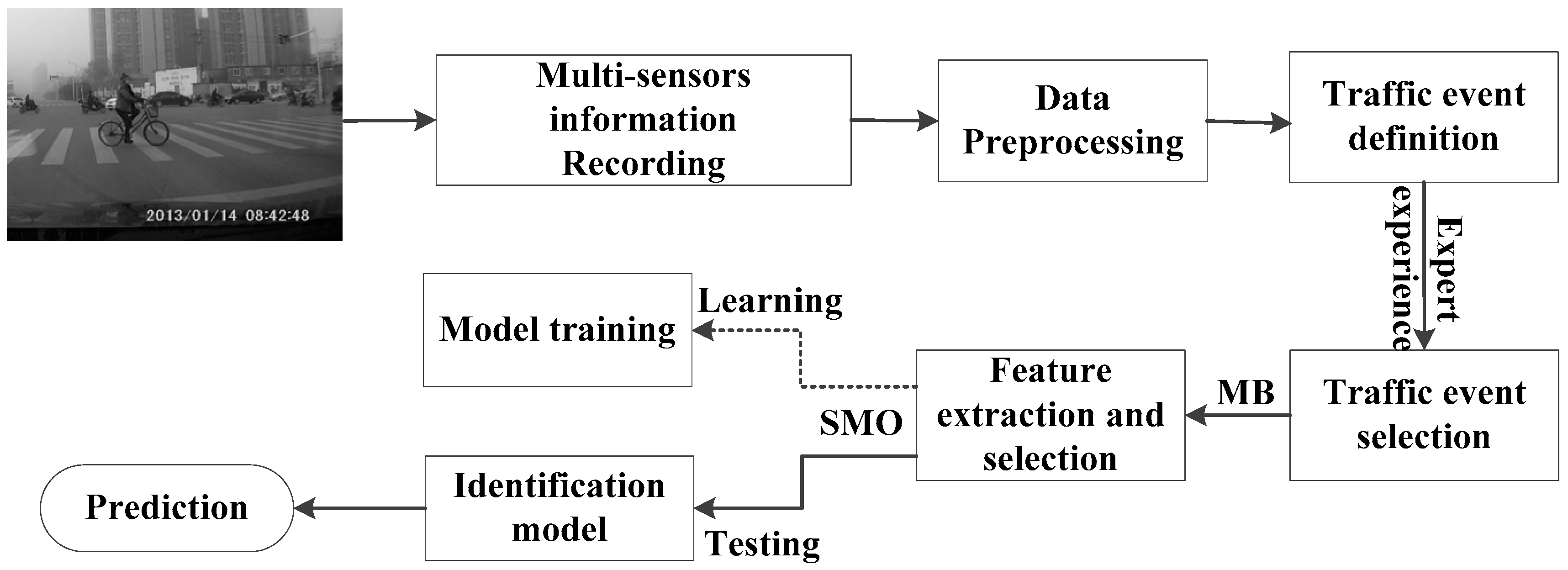
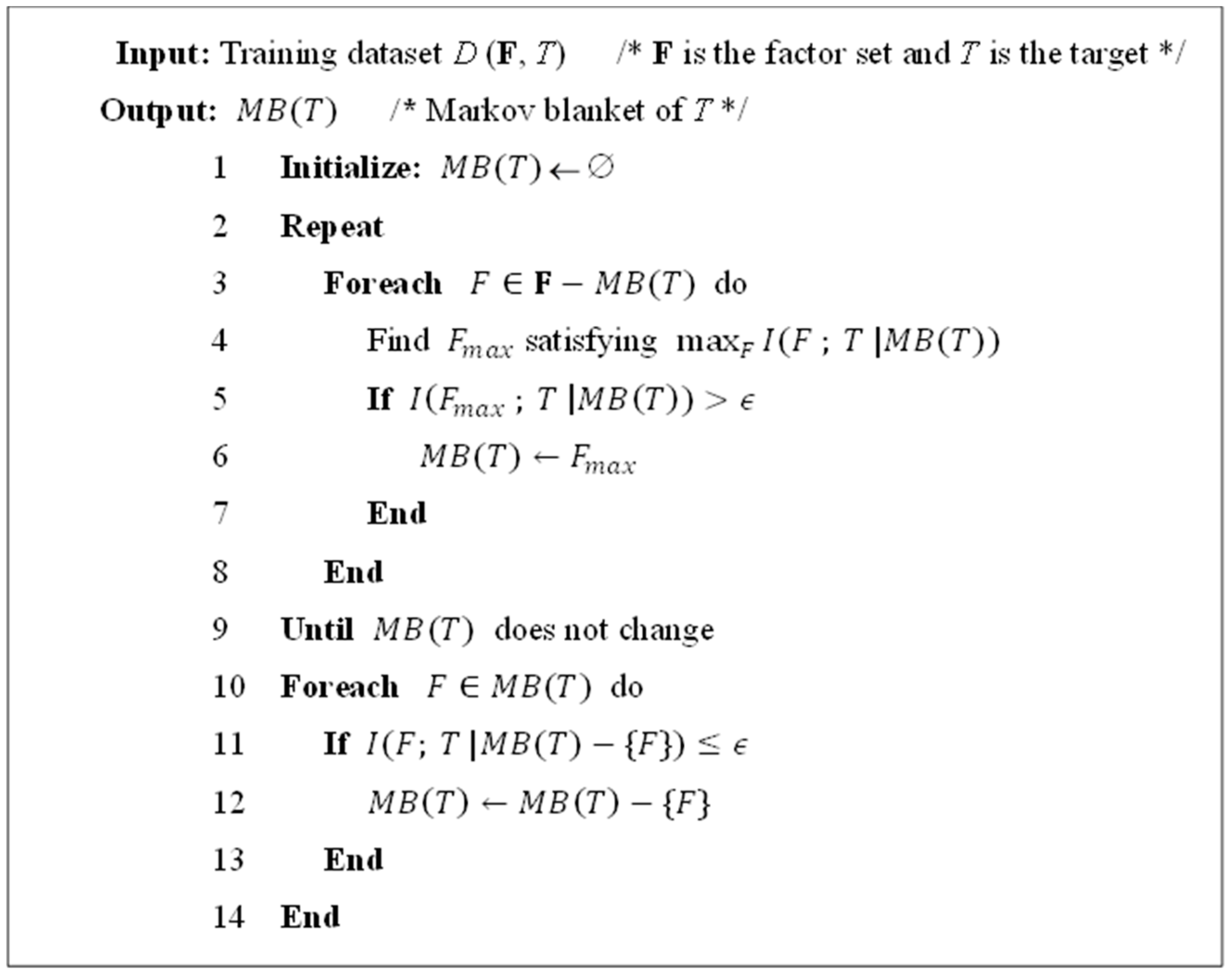
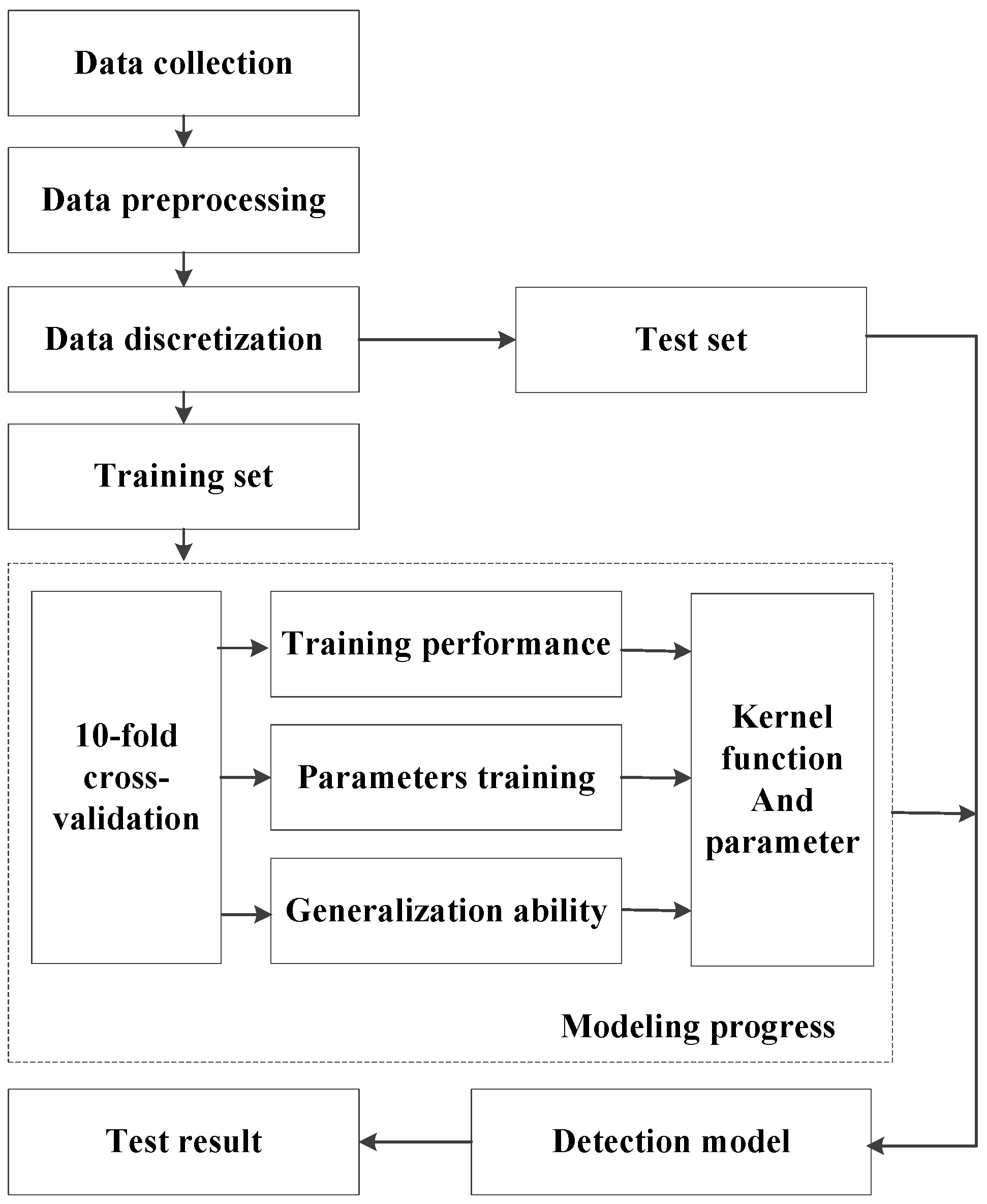


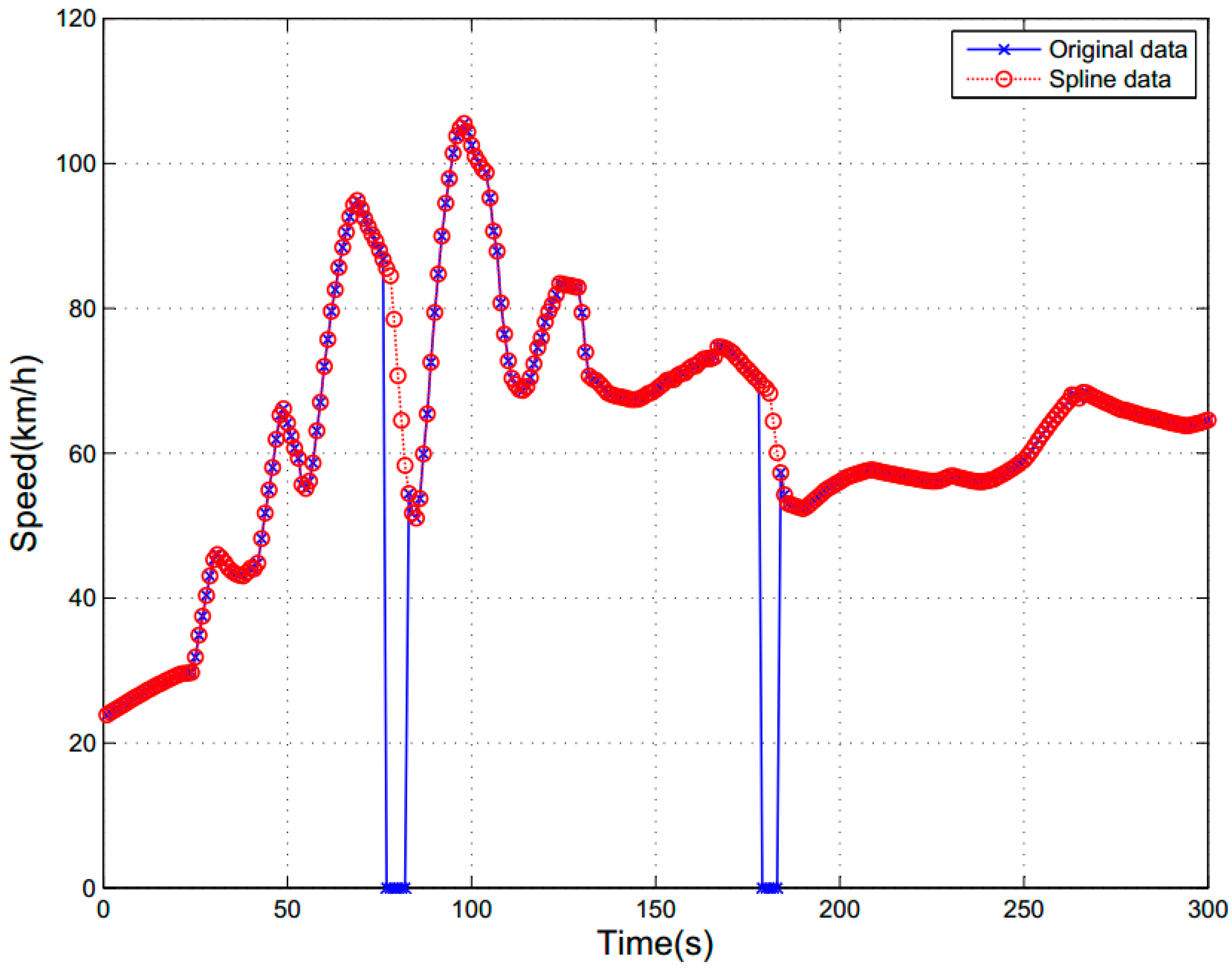
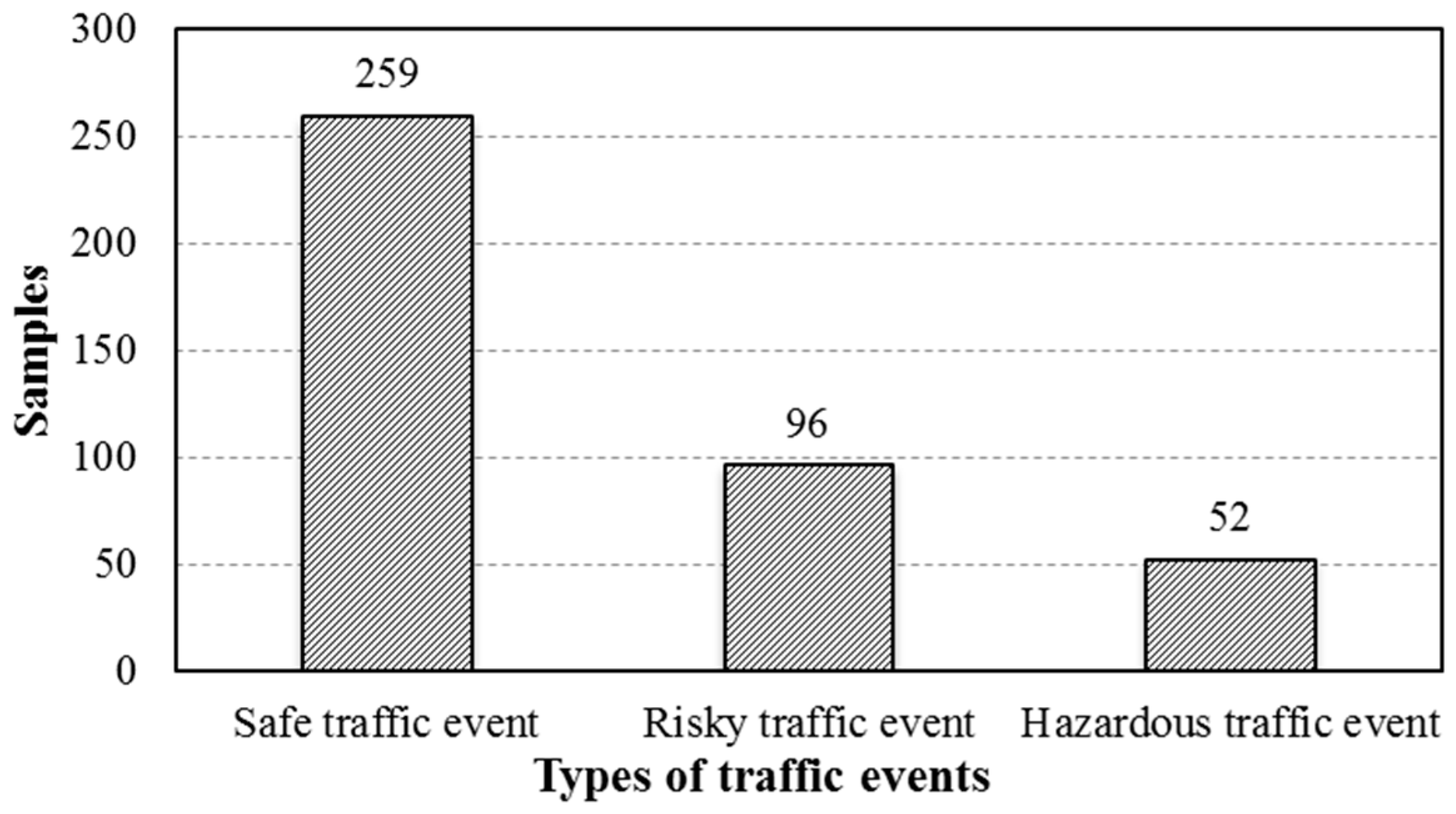
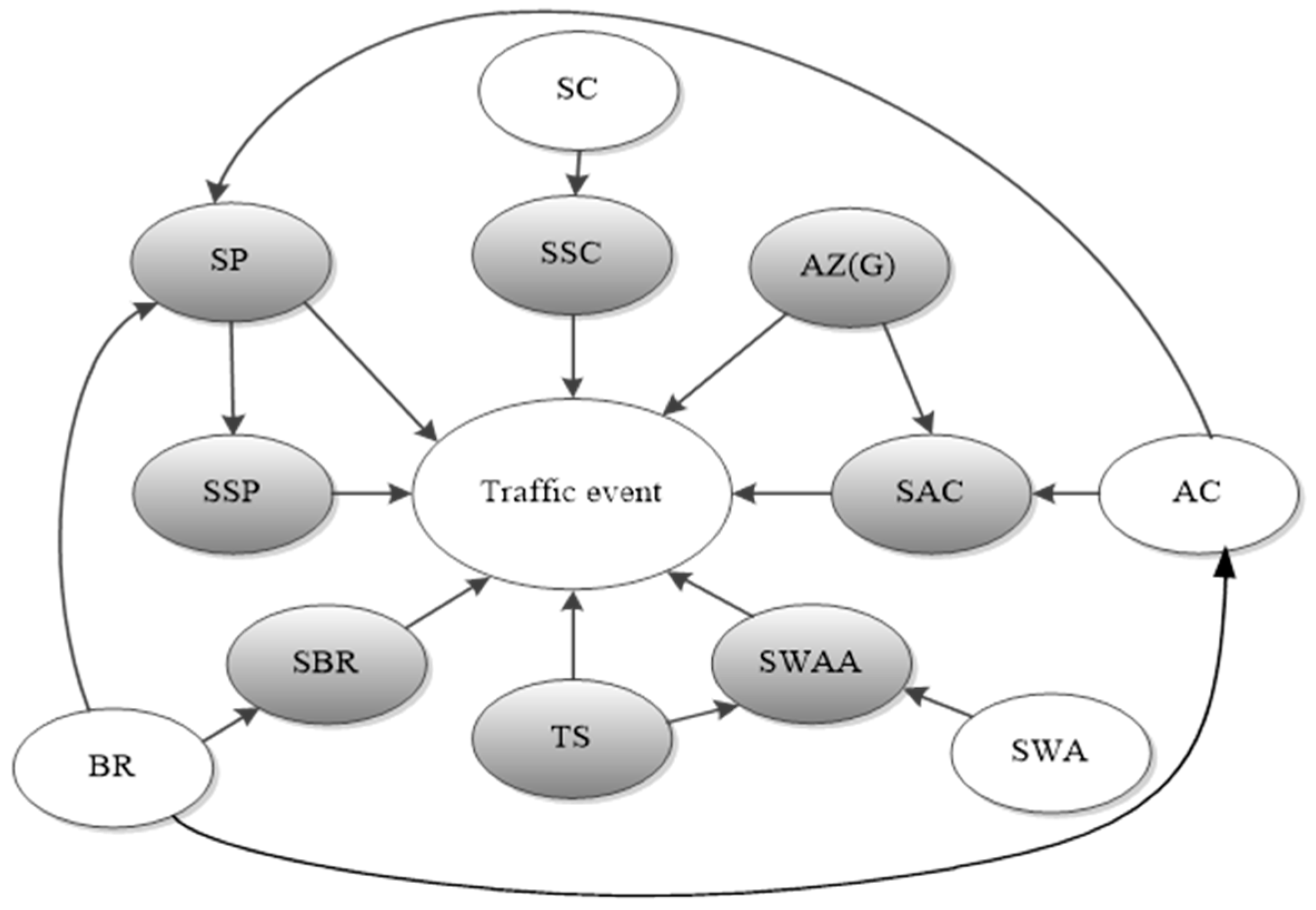




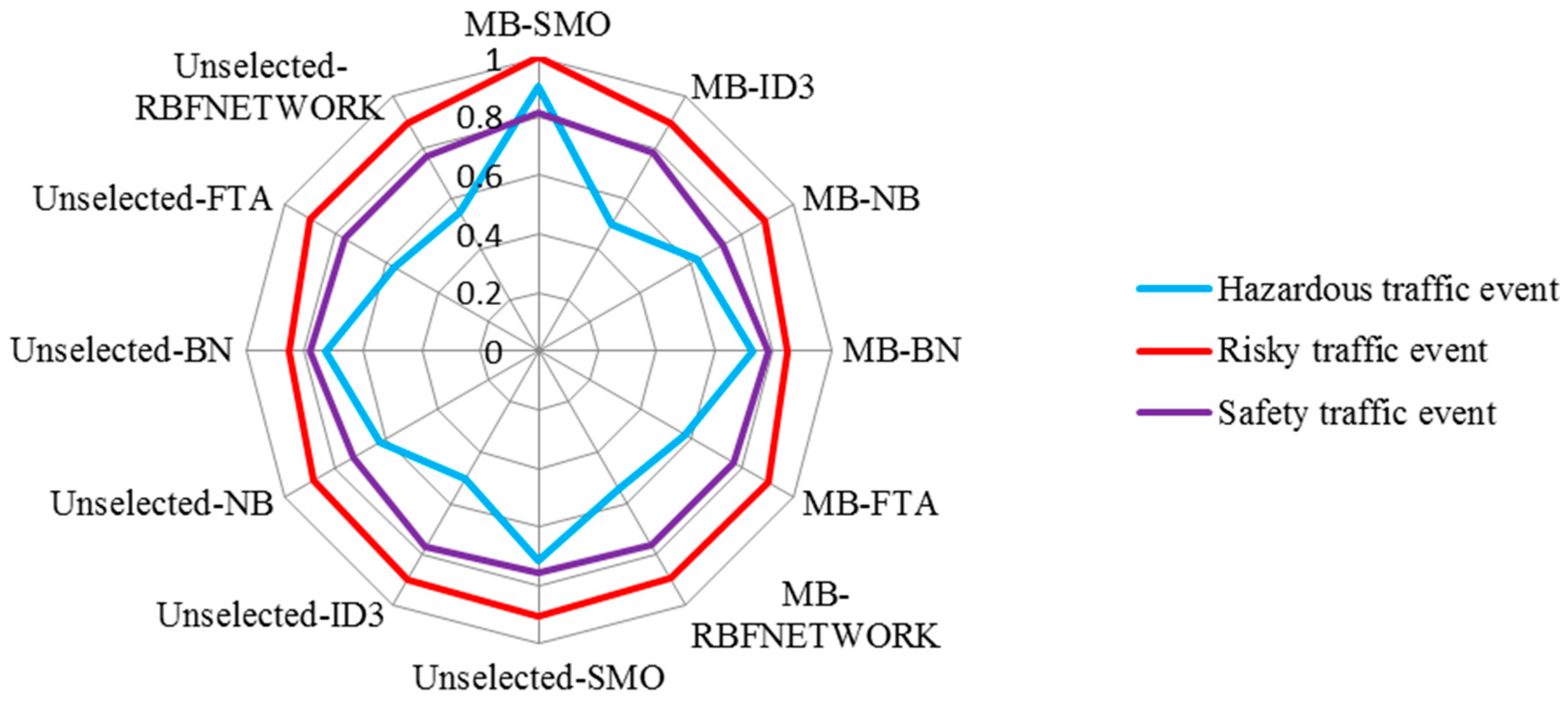
| Variable | Equipment | Sampling Rate | Tag |
|---|---|---|---|
| Related to driver | |||
| BVP | Biography Infiniti system | 256 Hz | BVP |
| STD of BVP | SBVP | ||
| SC | Biography Infiniti system | 256 Hz | SC |
| STD of SC | SSC | ||
| RR | Biography Infiniti system | 256 Hz | RR |
| STD of RR | SRR | ||
| PERCLOS | EEG recording equipment | 1000 Hz | POS |
| Related to vehicle | |||
| Speed | CAN in Vehicle | 25 Hz | SP |
| STD of speed | SSP | ||
| Brake | CAN in Vehicle | 25 Hz | BR |
| STD of brake | SBR | ||
| Turn signal | CAN in Vehicle | 25 Hz | TS |
| Course angle | CAN in Vehicle | 25 Hz | CS |
| Pitching angle | CAN in Vehicle | PA | |
| Steering wheel angle | Steering angle sensor | 30 Hz | SWA |
| STD of steering | SSWA | ||
| Steering acceleration | Steering angle sensors | 30 Hz | SWAA |
| STD of steering acceleration | |||
| Acceleration | Inertial Navigation system | 100 Hz | AC |
| STD of acceleration | SAC | ||
| Related to road and environment | |||
| The spacing to left lane line | MobileyeC2-270 | 15 Hz | SLL |
| The spacing to right lane line | MobileyeC2-270 | 15 Hz | SRL |
| Time headway | MobileyeC2-270 | 15 Hz | TH |
| Lane departure | MobileyeC2-270 | 15 Hz | LD |
| Acceleration X(G) | Cellphone | 256 Hz | AX(G) |
| Acceleration Y(G) | Cellphone | 256 Hz | AY(G) |
| Acceleration Z(G) | Cellphone | 256 Hz | AZ(G) |
| Time | Traffic Event | ||
|---|---|---|---|
| Self-Report | Assistant Report | Expert Record | |
| 14 October 2014; 9:00; 12 | 0 | 0 | 0 |
| 14 October 2014; 9:08; 11 | 2 | 2 | 2 |
| 14 October 2014; 9:25; 15 | 1 | 0 | 1 |
| 14 October 2014; 9:28; 16 | 0 | 1 | 1 |
| Control Variables | SP | SSP | SBR | TS | SWAA | SAC | SSC | AZ(G) | ||
|---|---|---|---|---|---|---|---|---|---|---|
| Traffic event | SP | Correlation | 1.000 | 0.391 | −0.179 | 0.030 | 0.027 | 0.246 | −0.014 | −0.069 |
| Sig. | 0.000 | 0.00 | 0.040 | 0.540 | 0.593 | 0.002 | 0.772 | 0.163 | ||
| SSP | Correlation | 1.000 | 0.169 | 0.015 | 0.105 | 0.007 | −0.025 | −0.147 | ||
| Sig. | 0.000 | 0.002 | 0.340 | 0.034 | 0.892 | 0.013 | 0.617 | |||
| SBR | Correlation | 1.00 | −0.18 | 0.01 | −0.037 | 0.058 | 0.054 | |||
| Sig. | 0.000 | 0.721 | 0.845 | 0.461 | 00.242 | 0.276 | ||||
| TS | Correlation | 1.00 | −0.114 | 0.056 | 0.000 | −0.016 | ||||
| Sig. | 0.000 | 0.021 | 0.263 | 0.0993 | 0.742 | |||||
| SWAA | Correlation | 1.00 | −0.002 | −0.009 | 0.034 | |||||
| Sig. | 0.000 | 0.975 | 0.852 | 0.493 | ||||||
| SAC | Correlation | 1.00 | 0.015 | 0.031 | ||||||
| Sig. | 0.000 | 0.764 | 0.529 | |||||||
| SSC | Correlation | 1.00 | −0.014 | |||||||
| Sig. | 0.000 | 0.777 | ||||||||
| AZ(G) | Correlation | 1.000 | ||||||||
| Sig. | 0.000 | |||||||||
| Algorithms | Features | Avg. TPR | Avg. FPR | AUC | Accuracy |
|---|---|---|---|---|---|
| SMO-unselected | 27 | 0.826 | 0.184 | 0.85 | 0.825 |
| SMO-PCA | 11 | 0.757 | 0.365 | 0.718 | 0.757 |
| SMO-DT | 9 | 0.595 | 0.57 | 0.51 | 0.595 |
| SMO-MB | 8 | 0.875 | 0.153 | 0.888 | 0.875 |
| Algorithms | Avg. TPR | Avg. FPR | AUC | Accuracy |
|---|---|---|---|---|
| MB-ID3 | 0.842 | 0.156 | 0.81 | 0.744 |
| MB-NB | 0.833 | 0.227 | 0.912 | 0.833 |
| MB-BN | 0.838 | 0.214 | 0.915 | 0.838 |
| MB-FTA | 0.855 | 0.154 | 0.893 | 0.855 |
| MB-RBFNETWORK | 0.806 | 0.244 | 0.893 | 0.806 |
| MB-SMO | 0.875 | 0.153 | 0.888 | 0.875 |
© 2016 by the authors; licensee MDPI, Basel, Switzerland. This article is an open access article distributed under the terms and conditions of the Creative Commons Attribution (CC-BY) license (http://creativecommons.org/licenses/by/4.0/).
Share and Cite
Yan, L.; Zhang, Y.; He, Y.; Gao, S.; Zhu, D.; Ran, B.; Wu, Q. Hazardous Traffic Event Detection Using Markov Blanket and Sequential Minimal Optimization (MB-SMO). Sensors 2016, 16, 1084. https://doi.org/10.3390/s16071084
Yan L, Zhang Y, He Y, Gao S, Zhu D, Ran B, Wu Q. Hazardous Traffic Event Detection Using Markov Blanket and Sequential Minimal Optimization (MB-SMO). Sensors. 2016; 16(7):1084. https://doi.org/10.3390/s16071084
Chicago/Turabian StyleYan, Lixin, Yishi Zhang, Yi He, Song Gao, Dunyao Zhu, Bin Ran, and Qing Wu. 2016. "Hazardous Traffic Event Detection Using Markov Blanket and Sequential Minimal Optimization (MB-SMO)" Sensors 16, no. 7: 1084. https://doi.org/10.3390/s16071084





